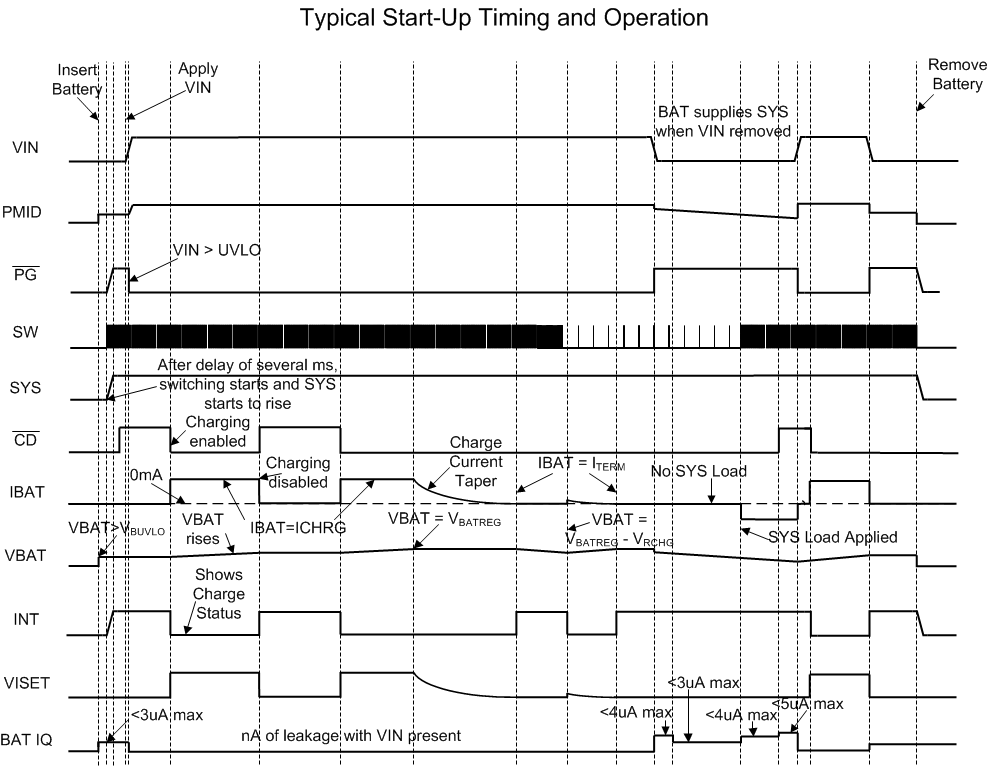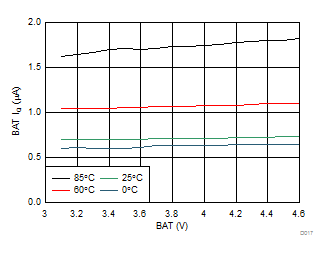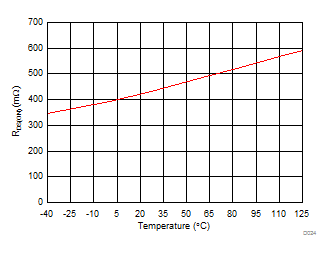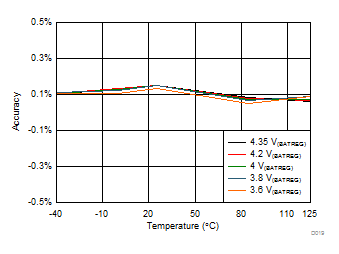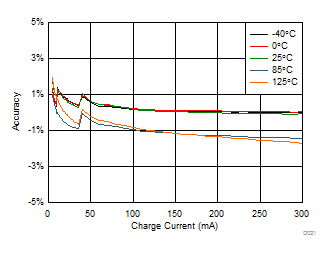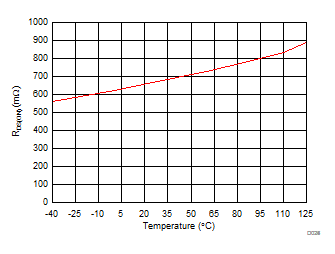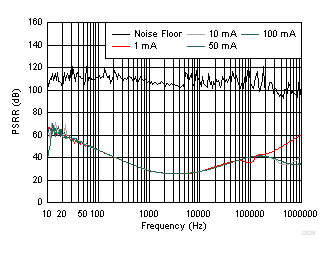SLUSBZ9C August 2015 – September 2016 BQ25120 , BQ25121
PRODUCTION DATA.
- 1 Features
- 2 Applications
- 3 Description
- 4 Revision History
- 5 Description (continued)
- 6 Device Comparison Table
- 7 Pin Configuration and Functions
- 8 Specifications
-
9 Detailed Description
- 9.1 Overview
- 9.2 Functional Block Diagram
- 9.3
Feature Description
- 9.3.1 Ship Mode
- 9.3.2 High Impedance Mode
- 9.3.3 Active Battery Only Connected
- 9.3.4 Voltage Based Battery Monitor
- 9.3.5 Sleep Mode
- 9.3.6 Input Voltage Based Dynamic Power Management (VIN(DPM))
- 9.3.7 Input Overvoltage Protection and Undervoltage Status Indication
- 9.3.8 Battery Charging Process and Charge Profile
- 9.3.9 Dynamic Power Path Management Mode
- 9.3.10 Battery Supplement Mode
- 9.3.11 Default Mode
- 9.3.12 Termination and Pre-Charge Current Programming by External Components (IPRETERM)
- 9.3.13 Input Current Limit Programming by External Components (ILIM)
- 9.3.14 Charge Current Programming by External Components (ISET)
- 9.3.15 Safety Timer and Watchdog Timer
- 9.3.16 External NTC Monitoring (TS)
- 9.3.17 Thermal Protection
- 9.3.18 Typical Application Power Dissipation
- 9.3.19 Status Indicators (PG and INT)
- 9.3.20 Chip Disable (CD)
- 9.3.21 Buck (PWM) Output
- 9.3.22 Load Switch / LDO Output and Control
- 9.3.23 Manual Reset Timer and Reset Output (MR and RESET)
- 9.4 Device Functional Modes
- 9.5 Programming
- 9.6
Register Maps
- 9.6.1 Status and Ship Mode Control Register
- 9.6.2 Faults and Faults Mask Register
- 9.6.3 TS Control and Faults Masks Register
- 9.6.4 Fast Charge Control Register
- 9.6.5 Termination/Pre-Charge and I2C Address Register
- 9.6.6 Battery Voltage Control Register
- 9.6.7 SYS VOUT Control Register
- 9.6.8 Load Switch and LDO Control Register
- 9.6.9 Push-button Control Register
- 9.6.10 ILIM and Battery UVLO Control Register
- 9.6.11 Voltage Based Battery Monitor Register
- 9.6.12 VIN_DPM and Timers Register
- 10Application and Implementation
- 11Power Supply Recommendations
- 12Layout
- 13Device and Documentation Support
- 14Mechanical, Packaging, and Orderable Information
Package Options
Mechanical Data (Package|Pins)
- YFP|25
Thermal pad, mechanical data (Package|Pins)
Orderable Information
8 Specifications
8.1 Absolute Maximum Ratings
over operating free-air temperature range (unless otherwise noted) (1)| MIN | MAX | UNIT | |||
|---|---|---|---|---|---|
| Input voltage | IN | wrt GND | –0.3 | 20 | V |
| PMID, VINLS | wrt GND | –0.3 | 7.7 | V | |
| CDSDA, SCL, ILIM, ISET, IPRETERM, LSCTRL, INT, RESET, TS | wrt GND | –0.3 | 5.5 | V | |
| Output voltage | SYS | 3.6 | V | ||
| Input current | IN | 400 | mA | ||
| Sink current | INT | 10 | mA | ||
| Sink/Source Current | RESET | 10 | mA | ||
| Output Voltage Continuos | SW | –0.7 | 7.7 | V | |
| Output Current Continuous | SW | 400 | mA | ||
| SYS, BAT | 300 | mA | |||
| Current | LS/LDO | 150 | mA | ||
| BAT Operating Voltage | VBAT, MR, | 6.6 | V | ||
| Junction Temperature | –40 | 125 | °C | ||
| Storage Temperature, Tstg | 300 | °C | |||
(1) Stresses beyond those listed under Absolute Maximum Ratings may cause permanent damage to the device. These are stress ratings only, which do not imply functional operation of the device at these or any other conditions beyond those indicated under Recommended Operating Conditions. Exposure to absolute-maximum-rated conditions for extended periods may affect device reliability.
8.2 ESD Ratings
| VALUE | UNIT | |||
|---|---|---|---|---|
| V(ESD) | Electrostatic discharge | Human body model (HBM), per ANSI/ESDA/JEDEC JS-001(1) | ±2000 | V |
| Charged device model (CDM), per JEDEC specification JESD22-C101(2) | ±500 | |||
(1) JEDEC document JEP155 states that 500-V HBM allows safe manufacturing with a standard ESD control process.
(2) JEDEC document JEP157 states that 250-V CDM allows safe manufacturing with a standard ESD control process.
8.3 Recommended Operating Conditions
over operating free-air temperature range (unless otherwise noted)| MIN | NOM | MAX | UNIT | ||
|---|---|---|---|---|---|
| VIN | IN voltage range | 3.4 | 5 | 20 | V |
| IN operating voltage range, recommended | 3.4 | 5 | 5.5 | ||
| V(BAT) | V(BAT) operating voltage range | 5.5(1) | V | ||
| V(VINLS) | VINLS voltage range for Load Switch | 0.8 | 5.5(2) | V | |
| V(VINLS) | VINLS voltage range for LDO | 2.2 | 5.5 | V | |
| IIN | Input Current, IN input | 400 | mA | ||
| I(SW) | Output Current from SW, DC | 300 | mA | ||
| I(PMID) | Output Current from PMID, DC | 300 | mA | ||
| ILS/LDO | Output Current from LS/LDO | 100 | mA | ||
| I(BAT), I(SYS) | Charging and discharging using internal battery FET | 300 | mA | ||
| TJ | Operating junction temperature range | –40 | 125 | °C | |
(1) Any voltage greater than shown should be a transient event.
(2) These inputs will support 6.6 V for less than 10% of the lifetime at V(BAT) or VIN, with a reduced current and/or performance.
8.4 Thermal Information
| THERMAL METRIC(1) | bq2512x | UNIT | |
|---|---|---|---|
| YFP (DSBGA) | |||
| 25 PINS | |||
| RθJA | Junction-to-ambient thermal resistance | 60 | °C/W |
| RθJC(top) | Junction-to-case (top) thermal resistance | 0.3 | °C/W |
| RθJB | Junction-to-board thermal resistance | 12.0 | °C/W |
| ψJT | Junction-to-top characterization parameter | 1.2 | °C/W |
| ψJB | Junction-to-board characterization parameter | 12.0 | °C/W |
| RθJC(bot) | Junction-to-case (bottom) thermal resistance | N/A | °C/W |
(1) For more information about traditional and new thermal metrics, see the IC Package Thermal Metrics application report, SPRA953.
8.5 Electrical Characteristics
Circuit of Figure 1, V(UVLO) < VIN < V(OVP) and VIN > V(BAT) + V(SLP), TJ = –40 to 85°C and TJ = 25°C for typical values (unless otherwise noted)8.6 Timing Requirements
| MIN | TYP | MAX | UNIT | |||
|---|---|---|---|---|---|---|
| POWER-PATH MANAGEMENT AND INPUT CURRENT LIMIT | ||||||
| tDGL_SC | Deglitch Time, PMID or SW Short Circuit during Discharge Mode | 250 | µs | |||
| tREC_SC | Recovery time, OUT Short Circuit during Discharge Mode | 2 | s | |||
| BATTERY CHARGER | ||||||
| tDGL_SHORT | Deglitch time transition from ISET short to I(CHARGE) disable | Clear fault by disconnecting VIN | 1 | ms | ||
| BATTERY CHARGING TIMERS | ||||||
| tMAXCHG | Charge safety timer | Programmable range | 2 | 540 | min | |
| tPRECHG | Precharge safety timer | 0.1 x tMAXCHG | ||||
| SYS OUTPUT | ||||||
| tONMIN | Minimum ON time | VIN = 3.6 V, VOUT = 2V, IOUT = 0 mA | 225 | ns | ||
| tOFFMIN | Minimum OFF time | VIN = 4.2 V | 50 | ns | ||
| tSTART_SW | SW start up time | VIN = 5 V, from write on EN_SW_OUT until output starts to rise | 5 | 25 | ms | |
| tSTART_SYS | SYS output time to start switching | From insertion of BAT > V(BUVLO) or VIN > V(UVLO) | 350 | µs | ||
| tSOFTSTART | Softstart time with reduced current limit | 400 | 1200 | µs | ||
| LS/LDO OUTPUT | ||||||
| tON_LDO | Turn ON time | 100mA load | 500 | µs | ||
| tOFF_LDO | Turn OFF time | 100mA load | 5 | µs | ||
| PUSHBUTTON TIMER | ||||||
| tWAKE1 | Push button timer wake 1 | Programmable Range for wake1 function | 0.05 | 1 | s | |
| tWAKE2 | Push button timer wake 2 | Programmable Range for wake2 function | 1 | 2 | s | |
| tRESET | Push button timer reset | Programmable Range for reset function | 8 | 14 | s | |
| tRESET_D | Reset pulse duration | 400 | ms | |||
| tDD | Detection delay (from MR, input to RESET) | For 0s condition | 6 | µs | ||
| BATTERY-PACK NTC MONITOR | ||||||
| tDGL(TS) | Deglitch time on TS change | Applies to V(HOT), V(WARM), V(COOL), and V(COLD) | 50 | ms | ||
| I2C INTERFACE | ||||||
| tWATCHDOG | I2C interface reset timer for host | 50 | s | |||
| tI2CRESET | I2C interface inactive reset timer | 700 | ms | |||
| tHIZ_ACTIVEBAT | Transition time required to enable the I2C interface from HiZ to Active BAT | 1 | ms | |||
| INPUT PIN | ||||||
| t/CD_DGL | Deglitch for CD | CD rising/falling | 100 | µs | ||
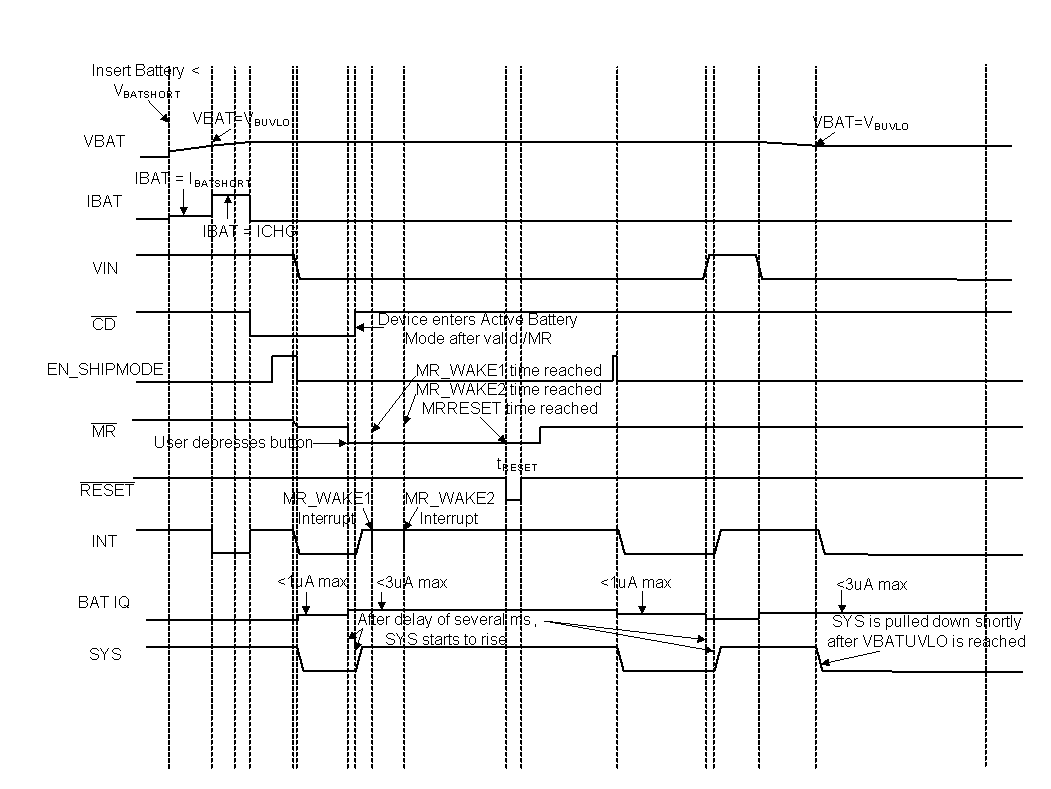 Figure 2. Battery Operation and Sleep Mode
Figure 2. Battery Operation and Sleep Mode
8.7 Typical Characteristics
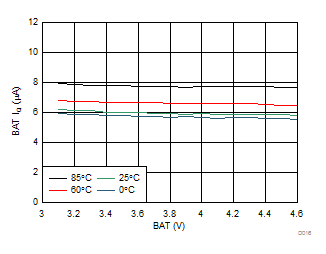
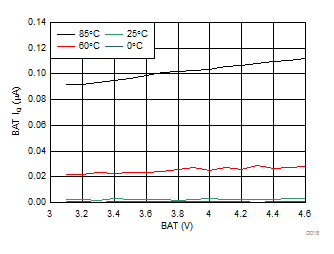
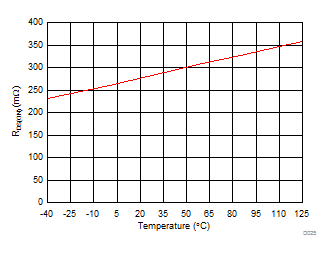
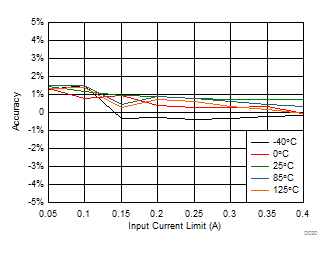
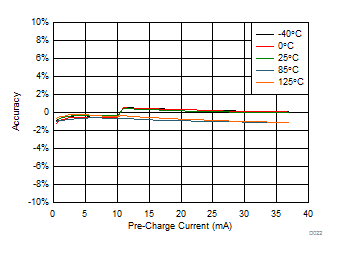
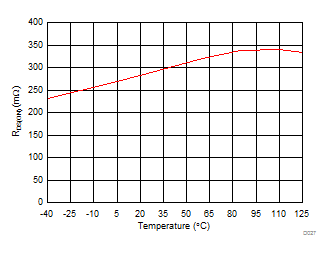
| VIN = 5 V |
